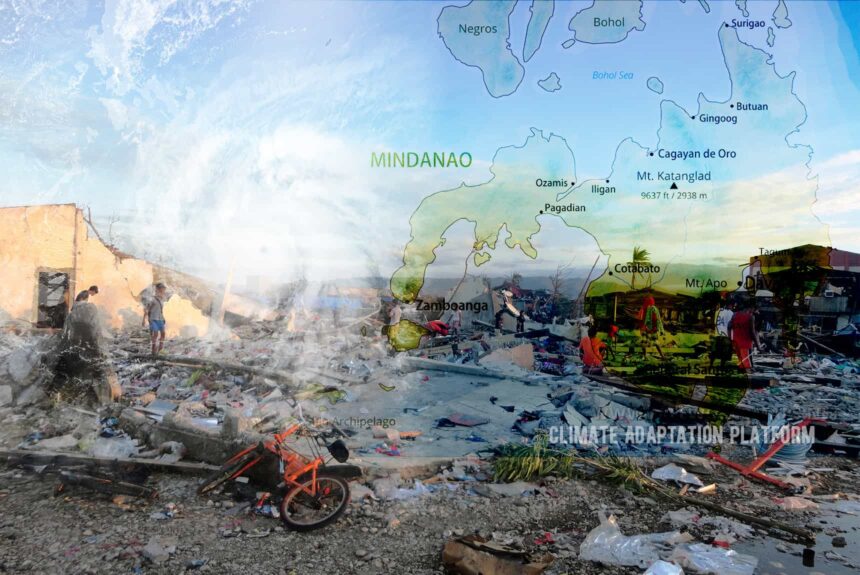Due to the Philippines’ location along the typhoon belt, an average of 20 typhoons enter the country, and around nine make landfall.
Landslides and flash floods due to heavy rains are closely linked to typhoons. Human factors also increase the Philippines’ vulnerabilities and disaster risks.
Within the last 50 years, the country has lost almost 80% of its mangroves in its coastal areas. In addition, large-scale deforestation contributes to a decline of its forest cover at an average speed of 150 thousand hectares per year, a significant cause of landslides and flash floods.
When Typhoon Bopha landed in Eastern Mindanao, Philippines, in December 2012, flash floods and landslides buried communities in Compostella Valley with huge rocks and timbers, destroying businesses and farms.
The study examined the communities’ adaptive capacity to climate disasters such as flash floods and landslides.
Although typhoon Bopha had less rainfall than earlier typhoons, the flash floods and landslides devastated four provinces in Eastern Mindanao.
The category five typhoon, the strongest in over a century, made landfall in the Davao Oriental area. The typhoon affected over 6 million people, killed at least 1000, and destroyed more than 200,000 houses.
Four provinces’ damages were estimated at US$1 billion, including losses in infrastructure, agricultural produce, and private assets, with Compostella Valley being the most affected province.
The study assessed the adaptive capacity of communities in Compostella Valley, particularly in New Bataan, which has seen the worst effects of landslides and flash floods.
The study examined the sources of the communities’ vulnerabilities and measured their adaptive capacity to recover from the loss and damages caused by flash floods and landslides caused by Typhoon Bopha.
The study uses the intergovernmental panel on climate change (IPCC) definition of adaptive capacity, which is the ability of a system to adjust to climate change to moderate potential damages, take advantage of opportunities, or cope with the consequences.
The study’s system refers to a society that has to cope with climate extremes like typhoons, which cause flash floods and landslides from heavy rains. The consequences here cover economic, social, and ecological changes that alter society’s way of life.
According to the study, coping with society further depends on their awareness of the problems and their ability to manage and act, which defines human adaptive behaviour.
Researchers surveyed three case study villages in Compostella Valley. The respondents were grouped according to their adaptive capacity levels, which ranged from very high to very low.
The findings show diversity in adaptive capacity based on gender and resource access. Women and people in poverty have shown a low adaptive ability versus men and those in a better economic position or have access to resources or external support.
Loss of livelihoods, the ability to recover them, and the availability of external assistance are significant factors that reduce communities’ vulnerabilities and help them recover after a disaster.
Comparing respondents whose losses were limited to houses and livelihoods versus those who lost both homes and experienced human loss, the former perceived their property damage as their most severe loss.
The latter perceived damage to their houses was a less important source of climate vulnerability and did not consider relocation an essential concern after the disaster.
The study reveals people’s inherent resilience when confronted with massive losses. When they experience human loss, damages to their properties and livelihoods become less essential barriers to recovery, especially when faced with immediate assistance to help them with their post-disaster recovery.
To read the entire study, see the citation below.
Source:
Eugenio, E.A., Acosta, L.A., Magcale-Macandog, D.B., Macandog, P.B.M., Lin, E.K-H., Eugenio, J.M.A. and Manuta, J.B. (2016) “Adaptive capacity of Philippine communities vulnerable to flash floods and landslides: assessing loss and damage from typhoon Bopha in Eastern Mindanao”, Int. J. Sustainable Development, Vol. 19, No. 3, pp.279–314.



Leave a Reply